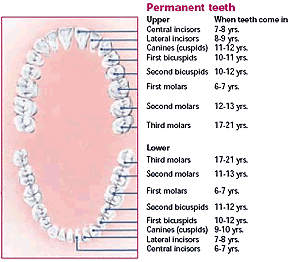Faster, Cheaper, Better
"The upside, the great one, is you don't need to drill and you don't need an injection [anaesthetic or freezing to prepare for the dental drill hitting nerves resulting in pain, preparatory to filling a tooth with a cavity]."
Dr. Margherita Fontana, professor of cariology, University of Michigan
"Being able to paint it [S.D.F.: silver diamine fluoride] on in 30 seconds with no noise, no drilling is better, faster, cheaper."
"I would encourage parents to ask for it. It's less trauma for the kid."
"S.D.F. reduces the incidence of new caries and progression of current caries by about 80 percent."
Dr. Richard Niederman, chairman, epidemiology and health promotion department, New York University College of Dentistry

Remember the controversy about whether or not to add fluoride to municipal water treatment systems? It held out great promise as a preventive for decay in children's teeth. And once fluoride did come on stream, its promise was realized. It made a tremendous difference in the health of a population's teeth with children requiring far fewer fillings as cavities were reduced, and everyone was thrilled.
Everyone? Well, not quite. Some municipalities, heeding the outcry of their citizens have actually reversed the trend, listening to the insistence that people had no wish to have their potable water adulterated with any chemical they were suspicious of, and they were suspicious of fluoride as an additive. So, in some instances, proof positive that fluoride works and children had healthier teeth as a result, wasn't sufficiently persuasive for the additive-aversion public.
In Japan, where stoicism in dental treatment is a real advantage, since dentists there proceed with any type of treatment without first ensuring patients are treated against pain, since freezing or any kind of anaesthetic isn't part of conventional dentistry in that country, the silver diamine fluoride solution has been used for decades. It has only just been introduced to North America. And dentists in the U.S. have taken it up with gusto.
Great for children and good for elderly patients, evading pain and anxiety while providing timely, inexpensive and efficient care for teeth. Preschoolers are often treated in a hospital setting under general anaesthesia, though there are concerns that anaesthesia use may be risky for the developing brain. "S.D.F. gives us an opportunity to decrease the number of toddlers with cavities going to the OR.", Dr. Arwa Owais, professor of pediatric dentistry at University of Iowa, points out.
Silver diamine fluoride kills decay-causing bacteria, therefore there is no need for that wretched and painful drilling that precedes filling in conventional dentistry. The studies that were so emphatic that fluoride in municipal water supply would have a beneficial effect on residents' teeth, particularly those of children vulnerable to early caries, were right on. And studies of S.D.F. similarly conclude that cavity progression is effectively halted and prevented with S.D.F.
The cost element is nothing to ignore, since conventional dentistry is time-consuming and expensive. Conventional drilling-and-filling averages in at $151 for a cavity as opposed to $25 for the S.D.F. treatment that takes no time at all, and is simply brushed on the teeth. Sounds super-great. As long as one isn't too sensitive to the downside, and whenever something sounds too good to be true, sometimes it is.
Well, the new treatment is good. But it does come with the warning that silver diamine fluoride has the effect of blackening the decay on a tooth even while it kills the bacteria, stopping the infection dead. Adults requiring dental treatment will weigh the pros and cons and for most people the sight of black areas on white teeth doesn't equate with an attractive presentation. As long as this occurs, the choice will continue to be limited to drill-and-fill.
Labels: Biochemistry, Dentistry, Health

0 Comments:
Post a Comment
<< Home